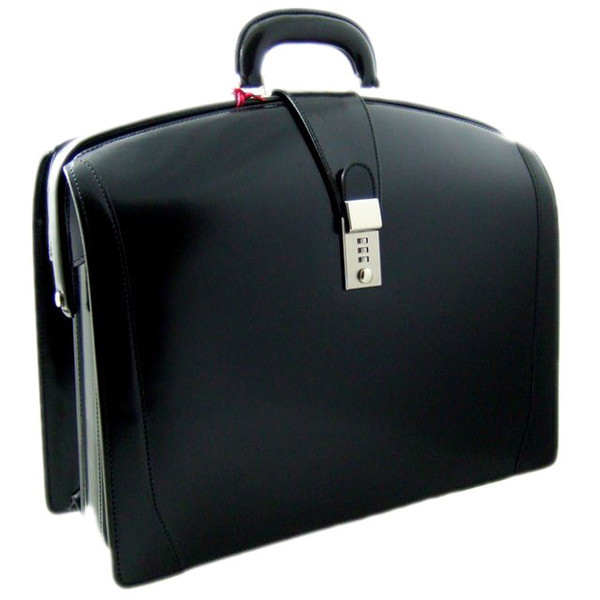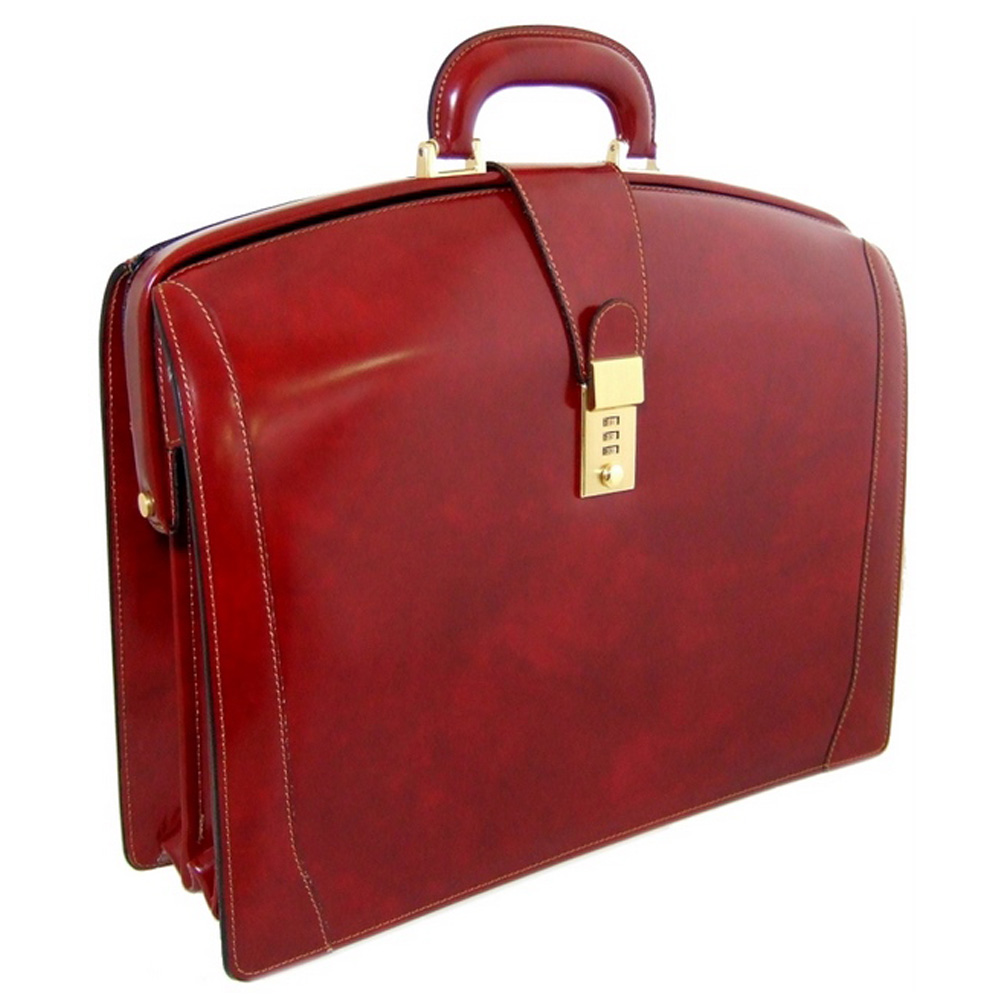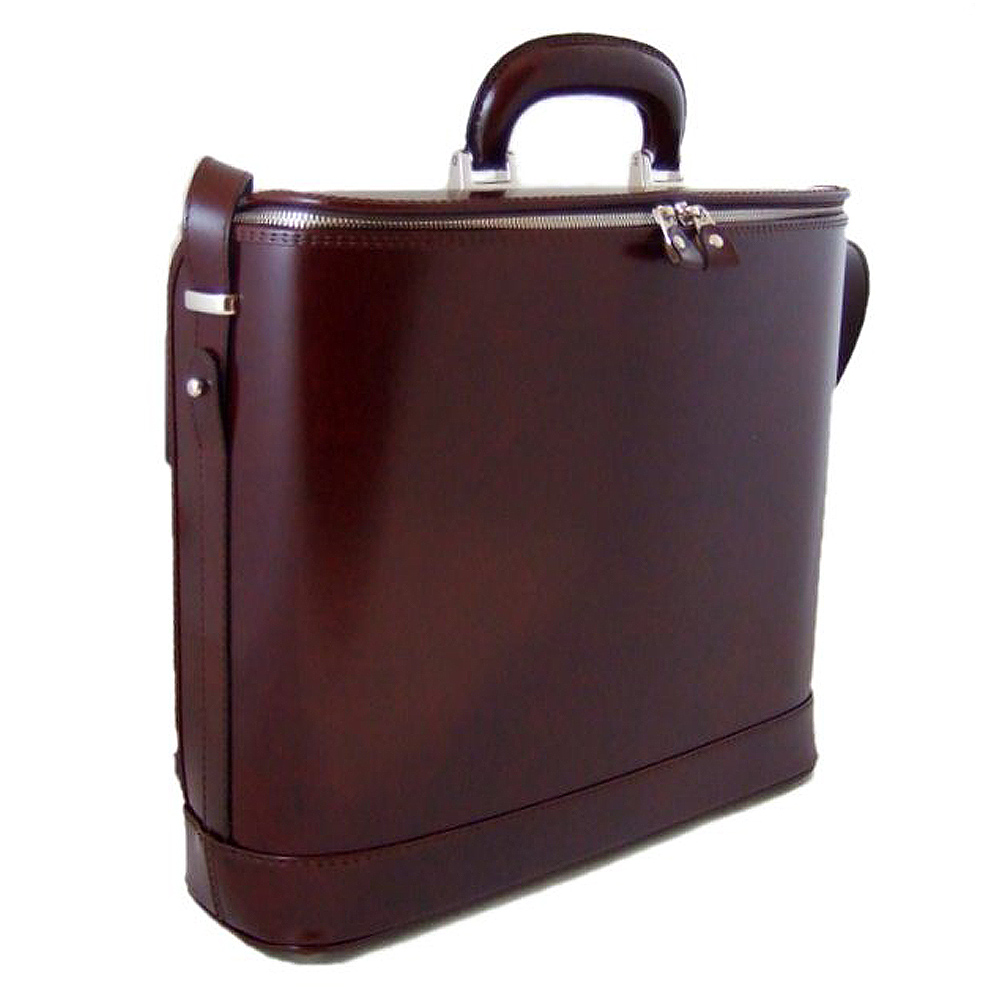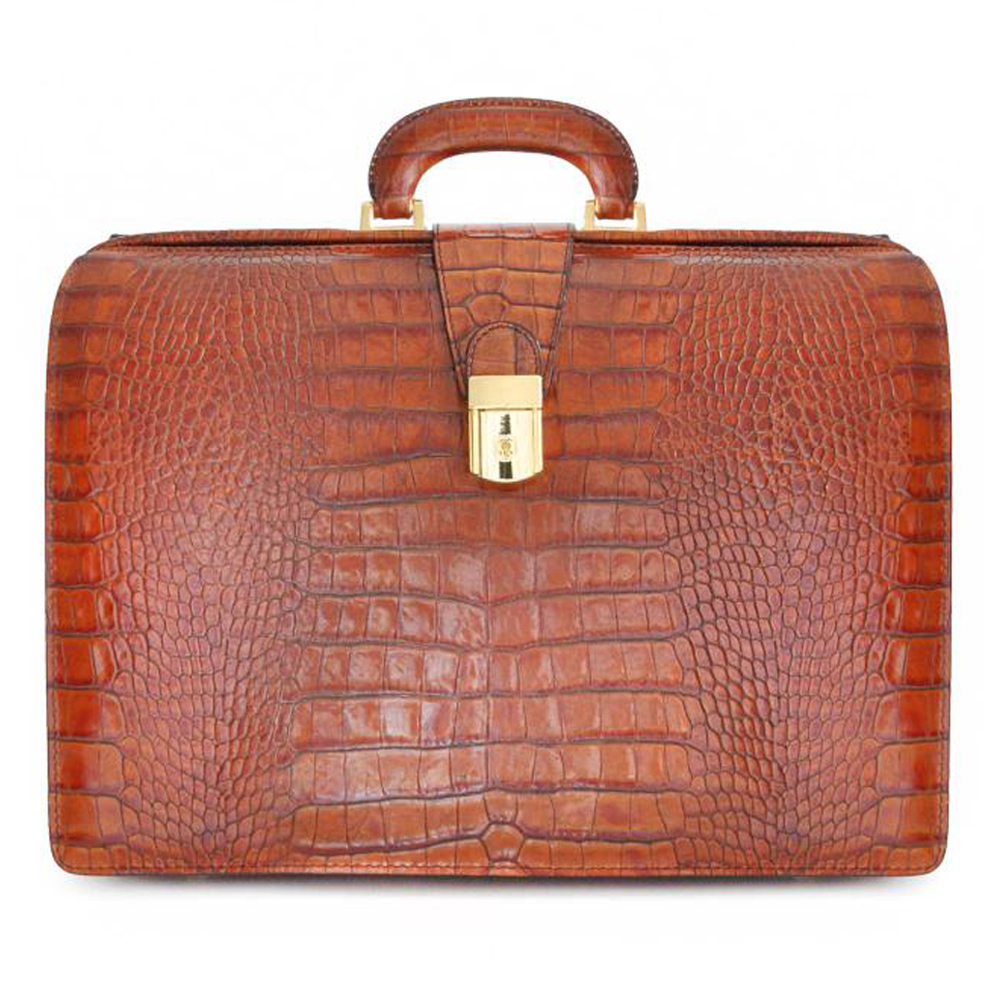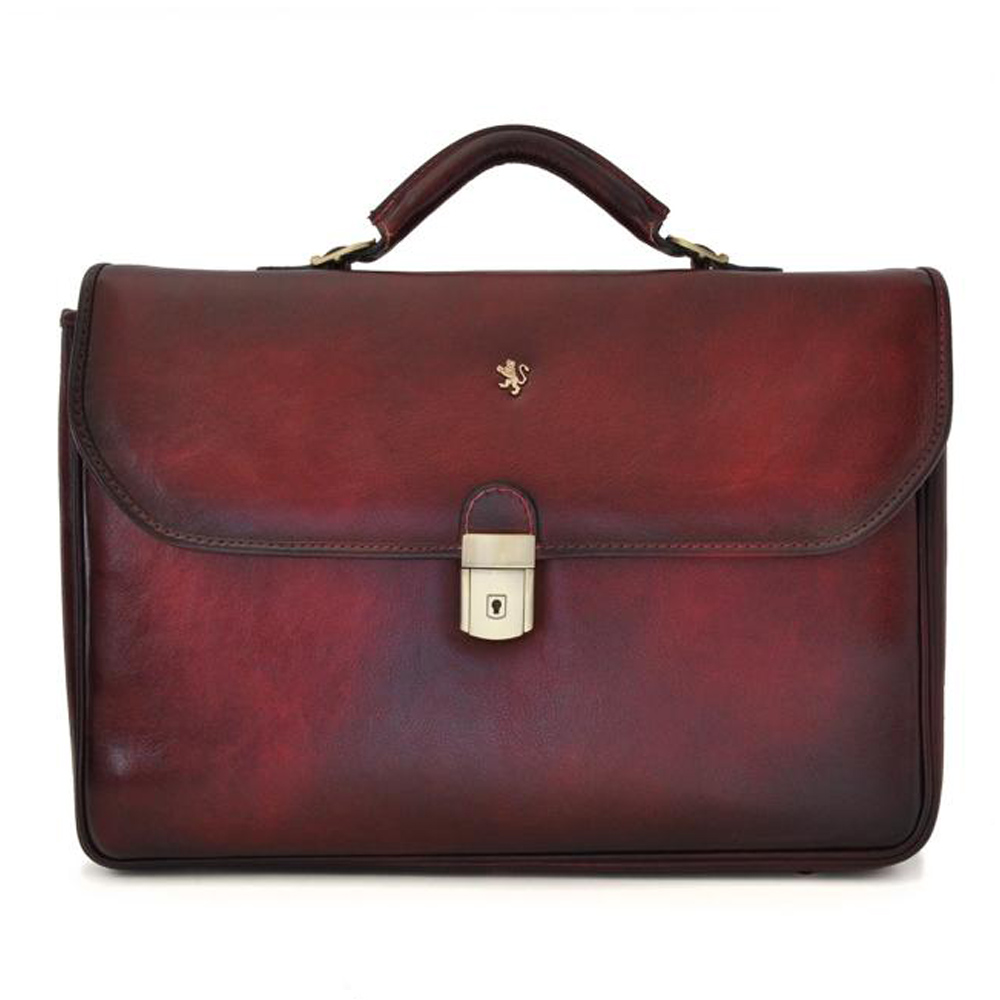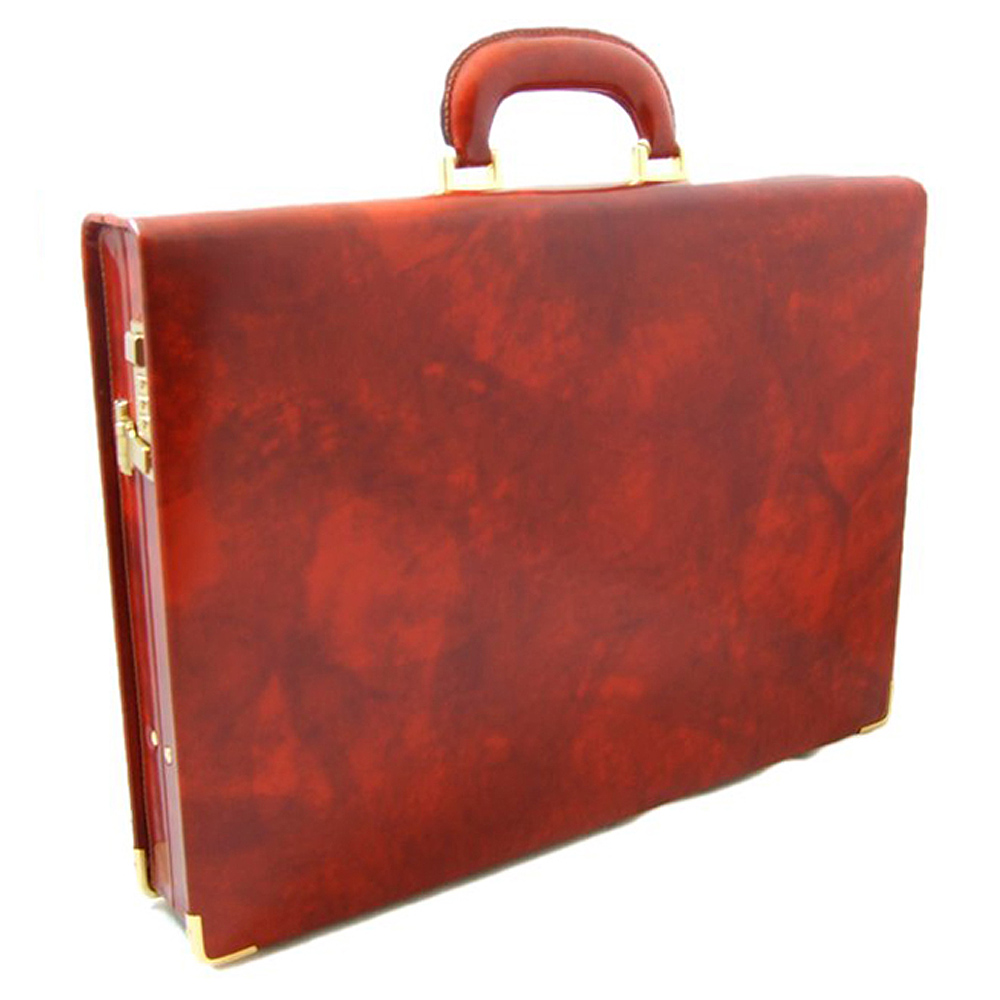As Florence is the heart of the leather industry in Italy, it will come as no surprise that many of our brands are based there. The one brand I want to talk about today is Pratesi which was established in 1948. They stock a large range of the more traditional and classic style of leather goods which includes handbags, business briefcases, travel bags, messengers and accessories. All of their pieces are extremely well made by very experienced artisans using age old techniques, some of which are unique to Pratesi.
I suppose for me the range that stands out the most is their luxury briefcases. All of their pieces are named, usually after towns and areas around Tuscany but some of the briefcases are named after famous men in history that helped make Florence a truly great city. I would like to run through some of these famous people and tell you about how influential they were in shaping this magnificent city.
| Brunelleschi Born in 1377, Filippo Brunelleschi became one of the leading figures of the renaissance period. He was a truly great designer and architect. Originally trained as a goldsmith but on his visit to Rome he was strongly influenced by the roman ruins. Using this as his inspiration, he went on to be one of the greatest architects of his time. He was commissioned to work on many great buildings but undoubtedly his greates triumph was the great dome of the Santa Maria del Fiori, otherwise know as Florence Cathedral. The biggest problem he would have to overcome was that buttresses were forbidden by the city fathers so it was down to his mathematical genius to work out another way to support and construct such a great structure. In fact there are two domes, the outer dome and an inner dome, both helping to support each other. They are connected by a series of horizontal rings which also form passage ways, so it is possible to walk between the two. 4 million bricks were used in the construction, a great many of which were a bespoke shape and had to me made individually. Brunelleschi even invented a hoisting system to raise the necessary masonry up to the dome. Brunelleschi also famously discovered the art of geometric perspective drawing. In other words using vanishing points and the use of colour light and shade to create the allusion of 3 dimensional perspective. A classic briefcase named after a classic renaissance designer. |
| Raffaello Raffaello Sanzio da Urbino, commonly known as Raffael was another great figure in the renaissance. Originally born in the La Marche region in 1483 he was the son of Giovanni Santi who was court painter to the Duke of Urbino. Even at an early ago he assisted his father and learned many techniques and skills. At the age of eight his mother died and within 3 years his father also past away leaving him orphaned and cared for by his uncle. After showing great talent he eventually trained as an assistant to another great master of the day Pietro Perugino who was to influence much of his early work. Raffaello gained commissions in many the the northern Italian cities including Florence. Here he was influenced by the great Leonardo da Vinci. Still very much retaining his own style but instilling this influence into his work he became one of the greatest painters of his age. It's little wonder then that this stylish briefcase is named after one of the most distinctive painters of his time. |
| Leonardo This stunning business bag is named after arguably the greatest Italian to have ever lived, Leonardo da Vinci. A true genius of the renaissance period. Not only was he a master painter, he was a mathematician and an inventor who was truly ahead of his time. Born out of wedlock in the town of Vinci, situated on the outskirts of Florence, he was brought up to receive little in the way of a formal education but in his early teens gained an apprenticeship in the studio of the renowned painter Andrea del Vercocchio. As a youth living in Florence he was surrounded by great works which must have played an enormous influence on him. His early career was spent in Milan but then travelled to other affluent cities such as Bologna and Venice as the commissions came in. One of these commissions was The Last Supper, an iconic masterpiece now housed in Milan. Living back in Florence, Leonardo spent 2 years designing and produced the magnificent ‘The Battle of Anghiari’, depicting four men on horseback in the throws of battle. This masterpiece is now often referred to as the ‘Lost Leonardo’ as its whereabouts is unknown. It is thought that it may have been painted over by a later fresco. Here in Florence he also painted what is probably the most famous painting of them all, the Mona Lisa. Through his studies and observations of the human anatomy Leonardo produced drawings and sketches of the mechanical functions of the body, thus allowing doctors and scientists a greater understanding of how the body worked. His anatomical drawings were unmatched and he was even allowed access to corpses for dissection. Leonardo was also an accomplished engineer and great inventor. He had a fascination for flight and drew sketches of a flying machine similar to a helicopter and also conceived of the idea of a parachute. Other inventions include the anemometer which measures wind speeds, scuba gear, revolving bridge and an armoured car to name but a few. |
| Piccolomini This stylish briefcase is named in honour of the renowned Italian General Piccolomino who was born in Florence in 1599. Following a military education he became a pikeman in the Spanish army at the tender age of just 16. Piccolomini was destined for a military career. Just three years later saw the outbreak of the 30 years war. He was despatched by the Grand Duke of Tuscany who commissioned him as captain in a cavalry regiment, to Hungry where he fought with distinction in the Battle of White Mountain. He returned to the Spainish army for a short period with the rank of Colonel. Then with the help of his influential younger brother took a role in the diplomatic corp. At about this time Germany was invaded by Gustavus Adolphus of Sweden and Piccolomini was arrested briefly for trying to broker peace negotiations without authority. Following this he fought at the Battle of Lutzen where he was credited with great distinction. His battle scars included five severe bruises where musket balls had dented his armour. Following a long career in military he was eventually promoted to Lieutenant General of the Empire. |
| Machiavelli Machiavellian is a term often used today to describe someone who is unscrupulous, cunning and duplicitous and this is in reference to Niccolo Machiavelli who was born in Florence in 1469. He was in fact a man of many talents. Not only was he a politcian and a diplomat he was also a philosopher and a writer. In his capacity as a writer he produced comedies, songs and poetry his most notable manuscript was ‘The Prince’. This was a political satire that endorsed immoral behaviour such as dishonesty and killing opponents as acceptable in the political arena. However it is said that Machiavelli actually had a republican attitude to politics. When the Medici family who had ruled Florence for about 60 years, were expelled and the city became a republic, Machiavelli, who was at the time a scholar, was put in charge of the official Florentine government documents and shortly after, appointed Dieci di Liberta e Pace. At the start of the seventeenth century the catholic church attempted to take large parts of central Italy into their possession. Machiavelli was put in charge of the militia in order to defend the city. Crucially, instead of building up the army with mercenaries of whom he greatly distrusted, he increased the ranks using local men. This proved to be very effective and repeatedly successful. However in 1512 the Medici's, backed by the church, used Spanish soldiers to defeat the Florentines in Prato. Nowadays Machiavelli is often referred to as the founder of modern politics. |
 Pound Sterling
Pound Sterling
 US Dollars
US Dollars
 Euros
Euros
 Canadian Dollars
Canadian Dollars
 Australian Dollars
Australian Dollars
 Hong Kong Dollar
Hong Kong Dollar


